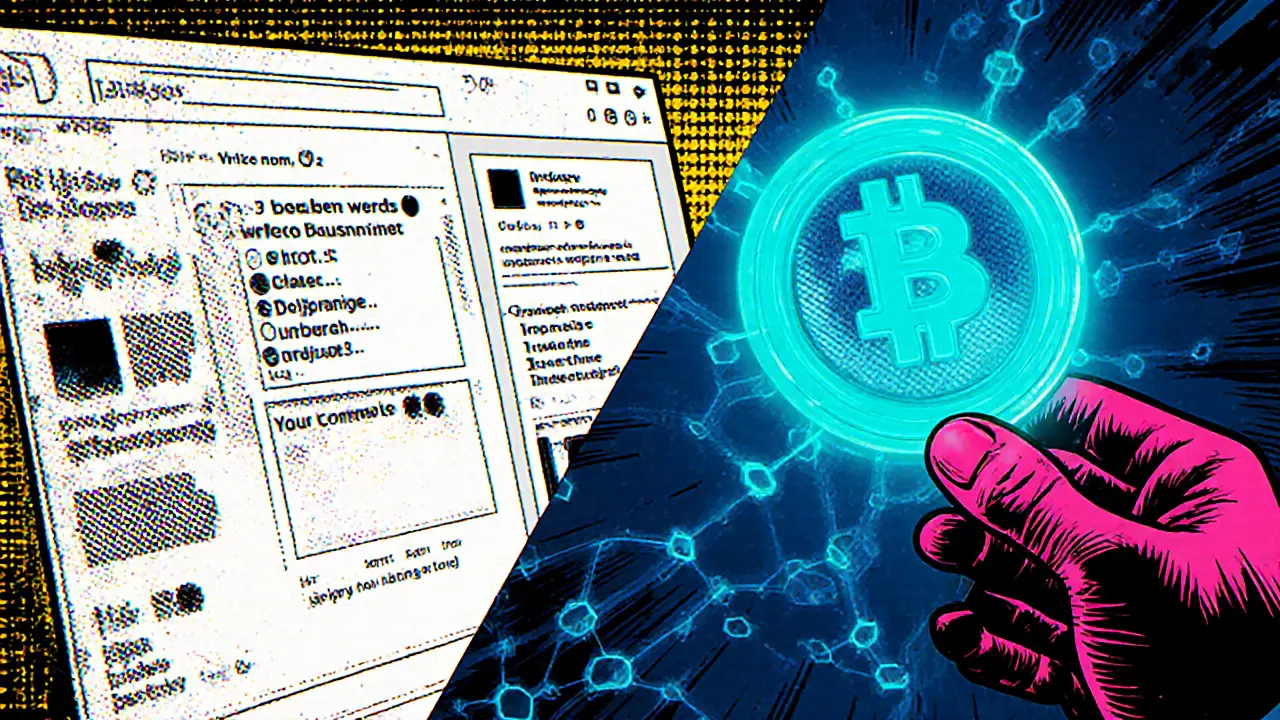Web3 Content Ownership: How Social Media is Changing
Explore how Web3 social media lets creators truly own their posts, earn royalties, and keep data sovereign-plus a step-by-step guide to getting started.
Read MoreWhen working with blockchain social platforms, online services built on public ledgers that let users interact without a central authority. Also known as Web3 social apps, they combine crypto incentives, on‑chain data storage, and peer‑to‑peer messaging. decentralized social networks, platforms like Mastodon or Lens Protocol that run on distributed nodes are a core subtype, while token‑gated communities, groups that require holding a specific token to access content or privileges show how ownership can control entry. Finally, Web3 identity, self‑sovereign profiles anchored to a wallet address gives users a portable reputation across apps. In short, blockchain social platforms encompass decentralized social networks, require token incentives, and rely on Web3 identity to manage trust.
Traditional social media puts data, moderation, and monetization in the hands of a single company. By contrast, a decentralized social network spreads those responsibilities across many nodes, which improves censorship resistance and data sovereignty. For example, a platform built on the Celestia modular blockchain can offload data availability to a separate layer, making content publishing cheaper and faster. This architectural split also means developers can focus on the user‑experience layer while the underlying data layer stays secure and scalable. The result is a community that can evolve without fearing a sudden policy change or a data‑wipe event.
Token‑gated communities add another dimension: they let creators monetize directly through token sales or staking. Holding the token often unlocks premium chats, early‑access drops, or voting rights on governance proposals. The funding rates concept from perpetual futures shows how token economics can be tuned to reward long‑term participation while discouraging short‑term speculation. When a community’s token has a well‑designed supply curve, you’ll see lower volatility and a healthier incentive structure.
Web3 identity ties everything together. Instead of usernames tied to email providers, users prove ownership of a wallet address, which can be linked to a decentralized identifier (DID). This identifier can carry reputation signals—like how many successful airdrop claims you’ve completed or whether you’ve avoided slashing penalties as a validator. In practice, a solid identity system reduces fraud on P2P trading platforms and makes community onboarding smoother. Think of it as the digital passport that lets you walk into any blockchain‑based forum without creating a new account each time.
Across the articles below you’ll find deep dives into modular blockchains (Celestia), real‑world case studies of underground crypto economies, and practical guides on slashing protection for validators. We also cover how funding rates affect token‑gated ecosystems, the impact of blockchain forks on community governance, and ways to protect your data on decentralized messaging apps. Whether you’re a developer building the next Lens‑style protocol or a user curious about how a token‑gated Discord works, the collection offers actionable insights and concrete examples.
So, if you’re ready to explore the full landscape of blockchain social platforms, keep scrolling. The posts ahead break down the tech, the economics, and the user experience you need to succeed in this fast‑moving space.

Explore how Web3 social media lets creators truly own their posts, earn royalties, and keep data sovereign-plus a step-by-step guide to getting started.
Read More